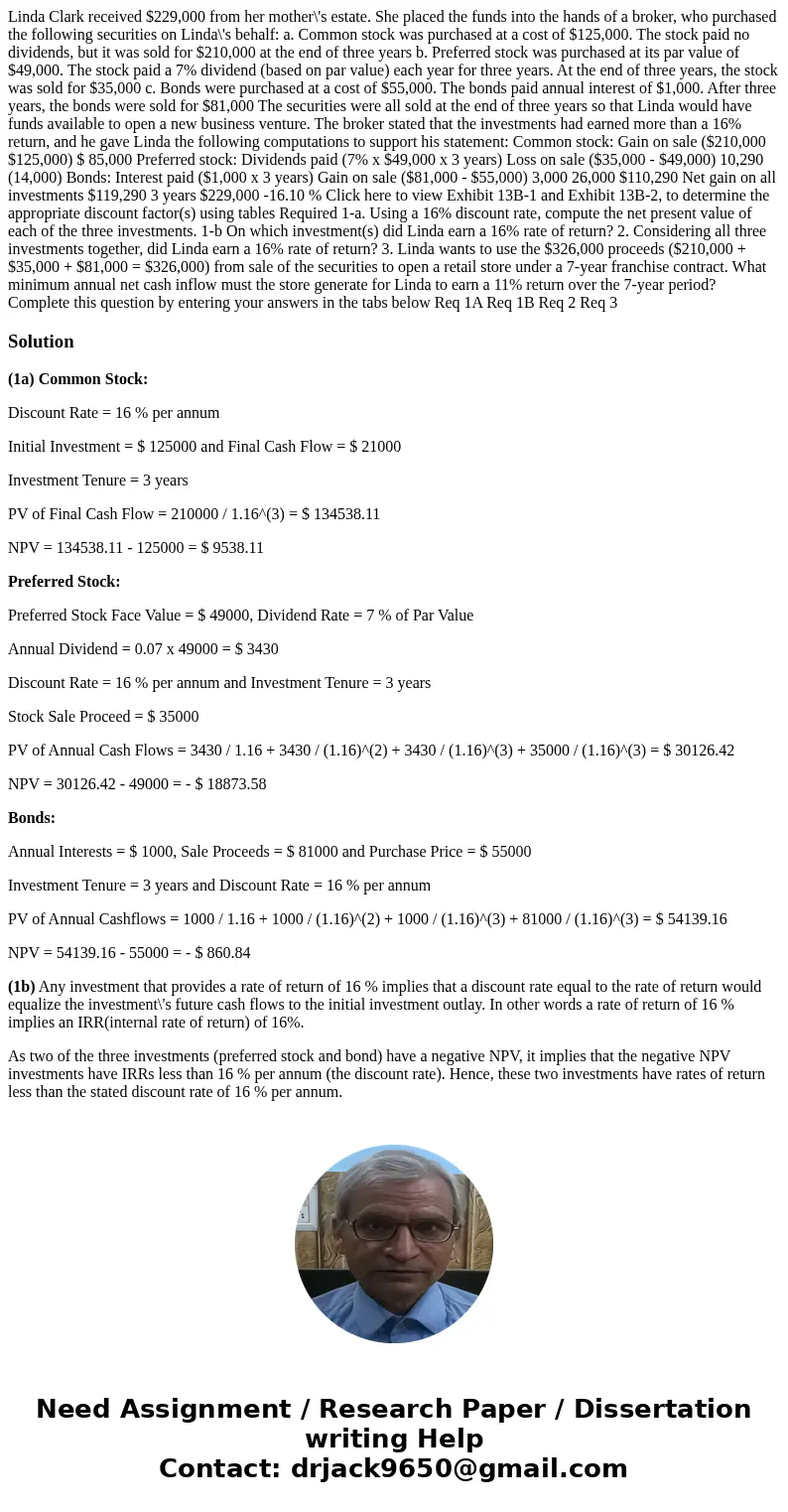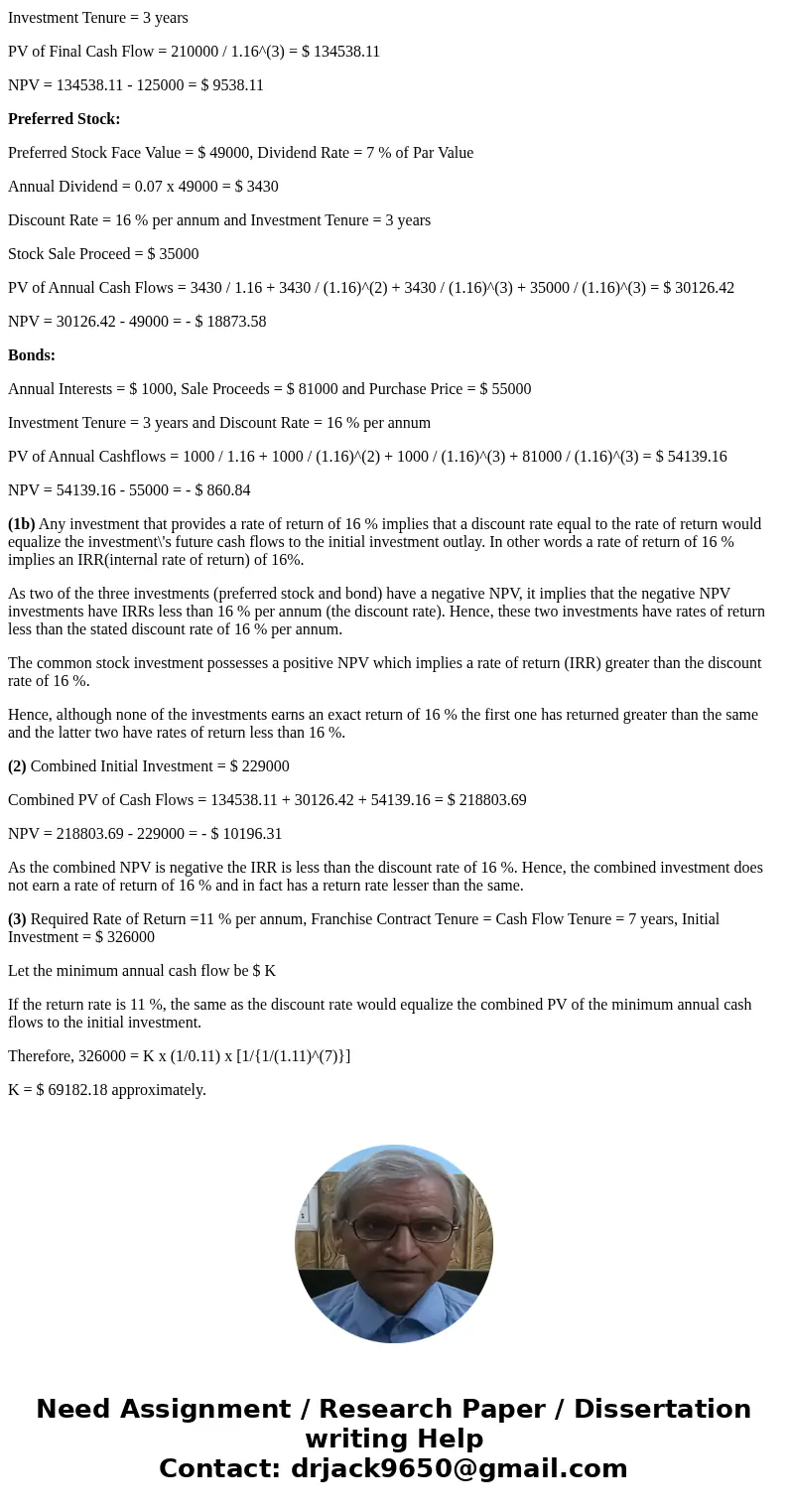Linda Clark received 229000 from her mothers estate She plac
Solution
(1a) Common Stock:
Discount Rate = 16 % per annum
Initial Investment = $ 125000 and Final Cash Flow = $ 21000
Investment Tenure = 3 years
PV of Final Cash Flow = 210000 / 1.16^(3) = $ 134538.11
NPV = 134538.11 - 125000 = $ 9538.11
Preferred Stock:
Preferred Stock Face Value = $ 49000, Dividend Rate = 7 % of Par Value
Annual Dividend = 0.07 x 49000 = $ 3430
Discount Rate = 16 % per annum and Investment Tenure = 3 years
Stock Sale Proceed = $ 35000
PV of Annual Cash Flows = 3430 / 1.16 + 3430 / (1.16)^(2) + 3430 / (1.16)^(3) + 35000 / (1.16)^(3) = $ 30126.42
NPV = 30126.42 - 49000 = - $ 18873.58
Bonds:
Annual Interests = $ 1000, Sale Proceeds = $ 81000 and Purchase Price = $ 55000
Investment Tenure = 3 years and Discount Rate = 16 % per annum
PV of Annual Cashflows = 1000 / 1.16 + 1000 / (1.16)^(2) + 1000 / (1.16)^(3) + 81000 / (1.16)^(3) = $ 54139.16
NPV = 54139.16 - 55000 = - $ 860.84
(1b) Any investment that provides a rate of return of 16 % implies that a discount rate equal to the rate of return would equalize the investment\'s future cash flows to the initial investment outlay. In other words a rate of return of 16 % implies an IRR(internal rate of return) of 16%.
As two of the three investments (preferred stock and bond) have a negative NPV, it implies that the negative NPV investments have IRRs less than 16 % per annum (the discount rate). Hence, these two investments have rates of return less than the stated discount rate of 16 % per annum.
The common stock investment possesses a positive NPV which implies a rate of return (IRR) greater than the discount rate of 16 %.
Hence, although none of the investments earns an exact return of 16 % the first one has returned greater than the same and the latter two have rates of return less than 16 %.
(2) Combined Initial Investment = $ 229000
Combined PV of Cash Flows = 134538.11 + 30126.42 + 54139.16 = $ 218803.69
NPV = 218803.69 - 229000 = - $ 10196.31
As the combined NPV is negative the IRR is less than the discount rate of 16 %. Hence, the combined investment does not earn a rate of return of 16 % and in fact has a return rate lesser than the same.
(3) Required Rate of Return =11 % per annum, Franchise Contract Tenure = Cash Flow Tenure = 7 years, Initial Investment = $ 326000
Let the minimum annual cash flow be $ K
If the return rate is 11 %, the same as the discount rate would equalize the combined PV of the minimum annual cash flows to the initial investment.
Therefore, 326000 = K x (1/0.11) x [1/{1/(1.11)^(7)}]
K = $ 69182.18 approximately.


 Homework Sourse
Homework Sourse